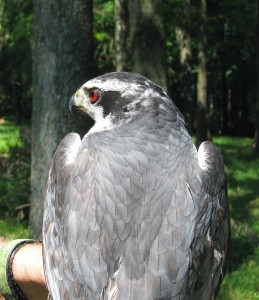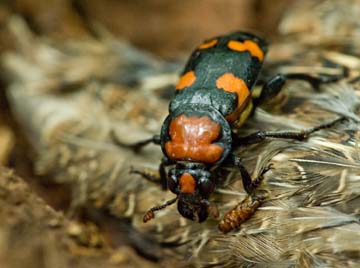Can I be Boing Boing when I grow up? Last week it ran a post by National Wildlife Federation naturalist David Mizejewski on how wildlife would save us if there were ever a zombie attack and if whatever caused zombification only affected humans.
“If there was ever a zombie uprising, wildlife would kick its ass,” Mizejewski says in the piece.
What follows is an overview of wildlife’s role in cleaning up the undead, from carrion eating birds, to carnivores that will go for anything slow-moving, to detritivores like maggots and beetles. It’s got lots of videos, so this is not lunchtime reading.
Our cultural zombie moment is peaking now, so enjoy. But when zombies finally jump the shark, remember, you heard it here first. (Well, second.)

 Here’s some good news for a Monday morning.
Here’s some good news for a Monday morning. “The last documented American burying beetle in Missouri was collected from Newton County (southwest Missouri) in the mid-1970s,” says
“The last documented American burying beetle in Missouri was collected from Newton County (southwest Missouri) in the mid-1970s,” says 